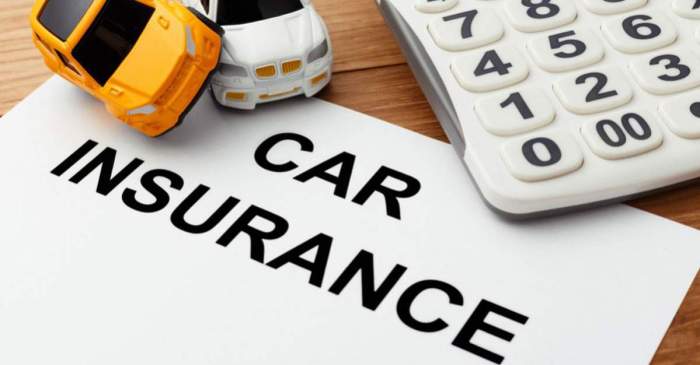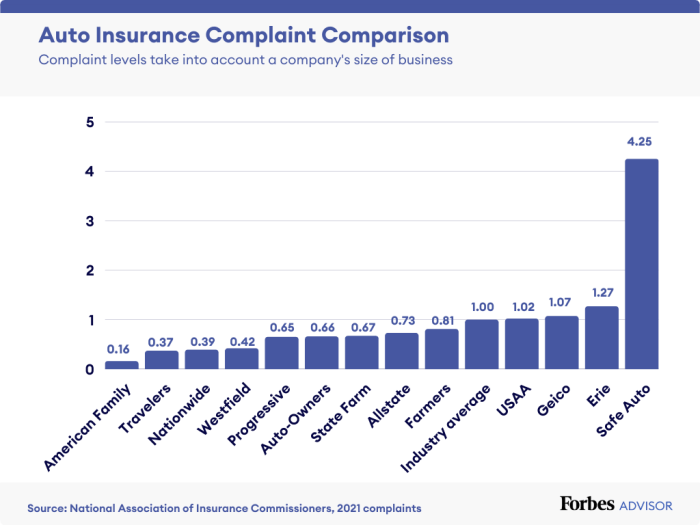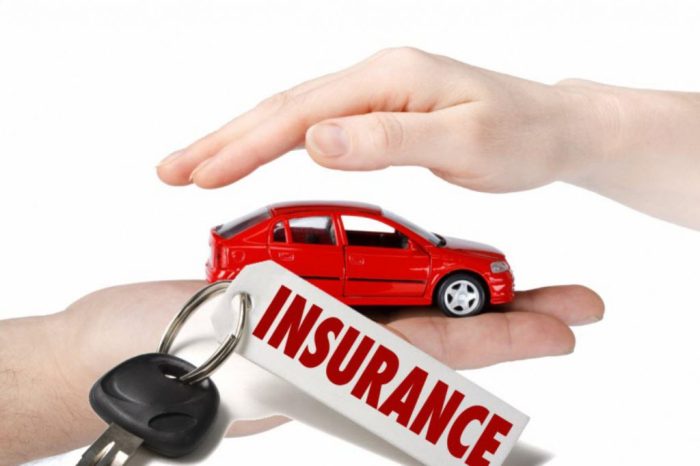How to get the best car insurance for a used car? It’s a question that pops up when you’re ready to hit the road in your new-to-you ride. Buying a used car is a smart move, but finding the right insurance can feel like navigating a maze.
You want to make sure you’re covered, but also avoid overpaying. Don’t worry, this guide will help you understand the ins and outs of car insurance for used cars, so you can drive with confidence.
First, you need to figure out what kind of coverage you actually need. A used car might not be worth as much as a new one, so you might not need the same level of protection. You’ll also want to factor in things like your driving history and the age of the car.
Once you’ve got a handle on your needs, you can start shopping around for the best rates. This means comparing quotes from different insurance companies and seeing what they offer. Don’t be afraid to negotiate for a better price, and don’t forget to check for discounts.
Understanding Your Needs

Getting the best car insurance for a used car involves understanding the factors that influence the cost and choosing the right coverage for your specific needs.
Factors Affecting Insurance Costs
The cost of car insurance for a used car is determined by several factors, including:
- Age and Condition of the Vehicle:Older cars generally cost less to insure than newer cars, as they are less expensive to repair or replace. However, the condition of the vehicle plays a significant role. A well-maintained used car with a clean history will likely have lower insurance premiums than a car with a history of accidents or repairs.
- Vehicle Value:The actual value of your used car, as determined by its market value, will impact your insurance premiums. Higher-value vehicles typically have higher premiums.
- Your Driving History:Your driving record, including accidents, traffic violations, and driving experience, significantly affects your insurance premiums. A clean driving record generally translates to lower premiums.
- Your Location:The area where you live influences your insurance premiums. Urban areas with higher traffic density and accident rates tend to have higher insurance costs.
- Coverage Levels:The amount and type of coverage you choose will directly impact your insurance premiums. Comprehensive and collision coverage are typically more expensive than liability coverage alone.
Coverage Options for Used Cars
While the coverage options for used cars are similar to those for new cars, there are some key differences to consider:
- Comprehensive Coverage:This coverage protects you against damage to your car caused by events other than accidents, such as theft, vandalism, or natural disasters. For older cars, comprehensive coverage might be less crucial as the vehicle’s value might be lower.
- Collision Coverage:This coverage pays for repairs or replacement of your car if it’s involved in an accident. As older cars are more likely to experience mechanical issues, collision coverage can be particularly beneficial.
- Liability Coverage:This coverage protects you financially if you are responsible for an accident that causes injuries or property damage to others. Liability coverage is typically required by law and should be considered for all vehicles, regardless of age.
Determining the Right Level of Coverage
To determine the right level of coverage for your used car, consider the following:
- Age and Condition of the Vehicle:For older cars, comprehensive and collision coverage might be less essential due to the lower value of the vehicle.
- Your Financial Situation:Evaluate your ability to pay for repairs or replacement costs out of pocket. If you can afford to cover these costs, you might consider reducing coverage levels.
- Loan or Lease:If you have a loan or lease on your used car, the lender or leasing company might require certain coverage levels.
Researching Insurance Providers
Now that you understand your needs, it’s time to start researching insurance providers. This step is crucial because different companies offer various coverage options, pricing structures, and customer service experiences.
Comparing Insurance Providers
It’s important to compare different insurance providers to find the best fit for your needs. Here’s a table comparing some popular car insurance companies known for their coverage of used cars:
| Company Name | Coverage Options | Pricing | Customer Reviews |
|---|---|---|---|
| Progressive | Comprehensive, Collision, Liability, Uninsured Motorist, Personal Injury Protection | Competitive pricing, discounts for good driving records, and bundling policies | Generally positive, with high marks for customer service and claims handling |
| Geico | Similar coverage options to Progressive | Known for affordable rates, especially for young drivers | Mixed reviews, with some praising their affordability while others cite issues with customer service |
| State Farm | Comprehensive, Collision, Liability, Uninsured Motorist, Personal Injury Protection | Offers competitive rates and discounts for safe driving | Generally positive, with high ratings for customer satisfaction and claims handling |
| USAA | Comprehensive, Collision, Liability, Uninsured Motorist, Personal Injury Protection | Offers excellent rates for military members and their families | Consistently ranked highly for customer satisfaction and claims handling |
| Liberty Mutual | Comprehensive, Collision, Liability, Uninsured Motorist, Personal Injury Protection | Offers various discounts and flexible payment options | Mixed reviews, with some praising their coverage options while others cite issues with customer service |
Getting Quotes and Comparing Prices

Now that you’ve done your research and know what you need, it’s time to get quotes from different insurance companies and compare prices. This is the fun part, because you can start to see how much you’ll actually be paying.
Obtaining Quotes from Insurance Companies
To get quotes, you’ll need to provide some basic information about yourself and your car, such as your driving history, the year, make, and model of your car, and your zip code. You can get quotes online, over the phone, or in person.
Most insurance companies have a user-friendly website where you can easily get a quote.
Factors Affecting Insurance Premiums
There are a bunch of factors that can affect your final insurance premium. Here’s a breakdown:
Factors Affecting Insurance Premiums
- Your driving history: This is a big one! If you’ve got a clean driving record, you’ll likely get a lower premium. But if you’ve got a few tickets or accidents, expect to pay more.
- Your age and gender: Younger drivers tend to pay more, as they are statistically more likely to get into accidents. Gender also plays a role, but this varies by state.
- Your car’s make, model, and year: Some cars are considered more expensive to repair than others. For example, a luxury car will likely cost more to insure than a basic sedan.
- Your location: Insurance rates can vary significantly depending on where you live. If you live in a high-crime area, you might pay more.
- Your coverage: The type of coverage you choose will also affect your premium. If you want comprehensive coverage, which covers damage to your car from things like theft or natural disasters, you’ll pay more than if you just want liability coverage, which covers damage to other people’s cars and property.
Strategies for Negotiating a Lower Premium
Once you’ve gotten quotes from a few different companies, you can start to negotiate a lower premium. Here are some tips:
Negotiating a Lower Premium
- Ask about discounts: Most insurance companies offer discounts for things like good driving records, multiple car insurance, and safety features in your car. Make sure you ask about all the discounts you might qualify for.
- Shop around: Don’t just settle for the first quote you get. Get quotes from several different companies and compare them side-by-side.
- Consider raising your deductible: Your deductible is the amount you pay out-of-pocket before your insurance kicks in. If you’re willing to pay a higher deductible, you can often get a lower premium.
- Bundle your insurance: If you’re insuring multiple things, like your car and your home, you can often get a discount by bundling your policies with the same company.
- Negotiate with your current insurer: If you’re already with an insurance company, don’t be afraid to call them and ask for a better rate. They might be willing to lower your premium if you threaten to switch to a different company.
Understanding Policy Details

It’s not just about getting the lowest price; you need to understand the details of the policy to ensure you have the right coverage for your used car. Dive into the key terms and conditions to make an informed decision.
Coverage Types
Understanding the different types of coverage is crucial. These coverages protect you financially in case of accidents, theft, or other incidents.
- Liability Coverage:This is mandatory in most states and covers damages to other people’s property or injuries caused by you in an accident. It includes bodily injury liability and property damage liability.
- Collision Coverage:This covers damages to your car if you’re in an accident, regardless of who is at fault. You’ll need to pay a deductible, which is the amount you pay out of pocket before the insurance company covers the rest.
- Comprehensive Coverage:This protects your car against damages caused by non-collision events like theft, vandalism, fire, or natural disasters. You’ll also have a deductible to pay before the insurance company covers the rest.
- Uninsured/Underinsured Motorist Coverage:This protects you if you’re involved in an accident with a driver who doesn’t have insurance or doesn’t have enough insurance to cover your damages. This coverage is especially important if you live in an area with a high number of uninsured drivers.
Deductibles, Coverage Limits, and Exclusions
These elements play a significant role in determining your premium and the amount of coverage you receive.
- Deductible:This is the amount you pay out of pocket before your insurance company starts paying for covered damages. A higher deductible usually means a lower premium, and vice versa. For example, if you have a $500 deductible for collision coverage and you’re in an accident that costs $2,000 to repair, you’ll pay $500, and your insurance company will pay the remaining $1,500.
- Coverage Limits:This refers to the maximum amount your insurance company will pay for a covered claim. For example, if your liability coverage has a limit of $100,000 per person and $300,000 per accident, your insurance company will only pay up to $100,000 for injuries to one person and up to $300,000 for all injuries in one accident.
- Exclusions:These are specific situations or events that your insurance policy doesn’t cover. For example, your policy might exclude coverage for damages caused by wear and tear, or for accidents that occur while you’re driving under the influence of alcohol or drugs.
Saving Money on Car Insurance: How To Get The Best Car Insurance For A Used Car
You’ve found the perfect used car and secured financing, but now it’s time to get insurance. Don’t let your car insurance premiums eat into your budget. There are several ways to save money on your car insurance.
Bundling Insurance Policies
Bundling your car insurance with other types of insurance, like homeowners or renters insurance, can lead to significant savings. Insurance companies often offer discounts for bundling multiple policies, as they consider you a less risky customer.
Maintaining a Good Driving Record
A clean driving record is your best friend when it comes to car insurance. Avoiding accidents, traffic violations, and DUI convictions will keep your premiums low. Insurance companies view drivers with good records as lower risk, leading to lower premiums.
Choosing a Higher Deductible, How to get the best car insurance for a used car
Your deductible is the amount you pay out of pocket before your insurance kicks in. A higher deductible typically means lower premiums. Think about how much you can afford to pay in case of an accident and choose a deductible that balances your budget with your risk tolerance.
Shopping Around for Discounts and Special Offers
Don’t settle for the first quote you get. Shop around and compare quotes from different insurance providers. Many companies offer discounts for things like:
- Good student discounts
- Safety features in your car, like anti-theft devices or airbags
- Membership in certain organizations, like alumni associations or professional groups
- Completing a defensive driving course
Ask about any special offers or promotions they might have.
Closure

Getting the right car insurance for your used car doesn’t have to be a headache. By understanding your needs, researching your options, and comparing quotes, you can find the best deal and hit the road with peace of mind. Remember, it’s all about finding the right balance of coverage and price that fits your budget and your used car.
So, get out there, do your research, and get the insurance you deserve!
FAQ Summary
What if my used car is older?
For older used cars, you might want to consider lower coverage options like liability only. Since the car is worth less, comprehensive and collision coverage might not be as valuable.
How do I know if I’m getting a good deal?
Compare quotes from at least three different insurance companies. Look for companies with good customer reviews and strong financial ratings.
What happens if I don’t have car insurance?
Driving without insurance is illegal and can lead to hefty fines, license suspension, and even jail time. It can also leave you financially vulnerable in case of an accident.
